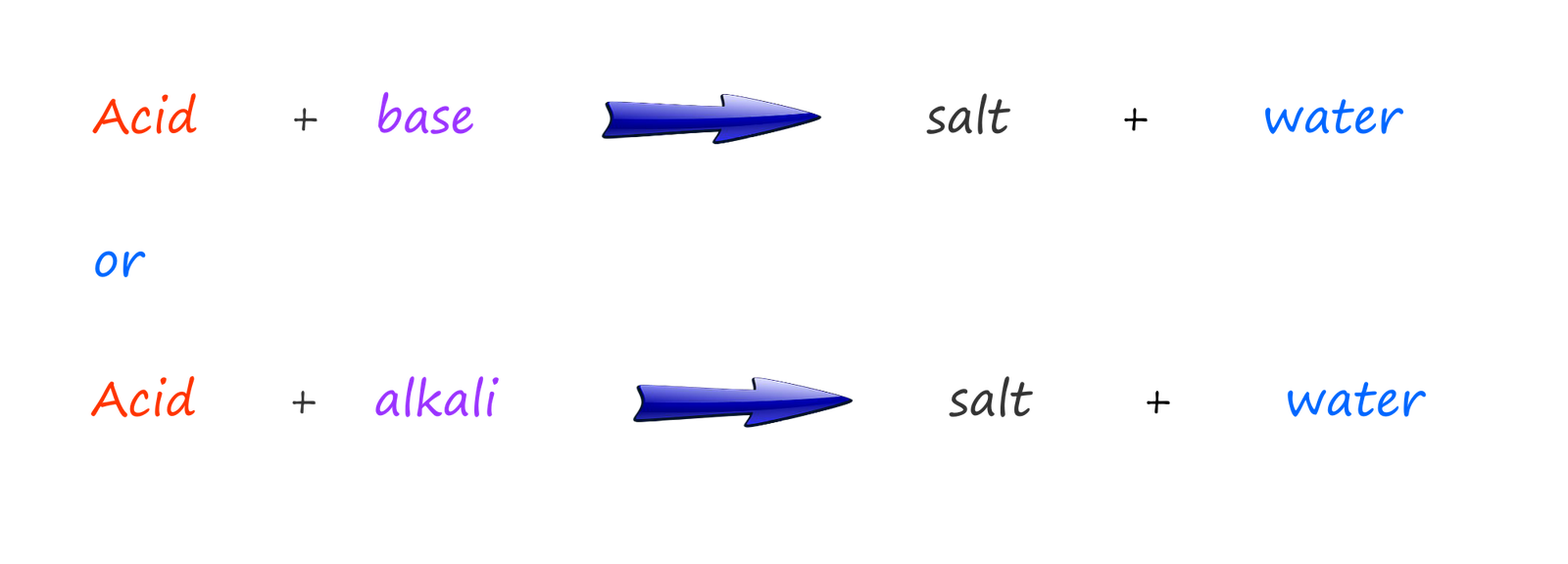

Higher and foundation tiers

Recall that acids:
| acid | molecular formula | alkali | molecular formula |
|---|---|---|---|
| hydrochloric acid | HCl | sodium hydroxide | NaOH |
| sulfuric acid | H2SO4 | potassium hydroxide | KOH |
| nitric acid | HNO3 | calcium hydroxide | Ca(OH)2 |
| ethanoic acid | CH3COOH | ammonium hydroxide | NH4 OH |
The reaction between an acid and an alkali or base is called neutralisation and the products of this neutralisation reaction are a salt and water, we can represent this reaction using the equations below:

If you study the equations above you will see that the hydrogen ion (H+) in the acid and the hydroxide ion (OH-) in the alkali simply react together to form water, we can show this as:
What is left over; in this case the chloride ion (Cl-) from the hydrochloric acid and the sodium ion (Na+) from the sodium hydroxide now simply forms the salt:
You can think of the salt as the acid where the hydrogen in the acid is replaced by the metal present in the alkali e.g. if we use hydrochloric acid and neutralise it with 3 different alkalis then the salt produced is always a chloride; as shown below (if you need help in working out the formula for the acids, alkalis and salts produced in these reactions then click here):



In these three examples the salts lithium sulfate, potassium sulfate and calcium sulfate are formed. There is an obvious pattern here, it's the same pattern for the examples with hydrochloric acid. The hydrogen in the acid is replaced by the metal present in the alkali; this means that with sulfuric acid the salt formed will always be a metal sulfate.
Finally if we use nitric acid (HNO3), then exactly the same pattern as above occurs e.g. nitric acid has the formula HNO3 and it contains one hydrogen ion and nitrate ions (NO-3). So the hydrogen ions will be neutralised by the hydroxide ions and the salt formed will be a metal nitrate as shown in the equations below:
